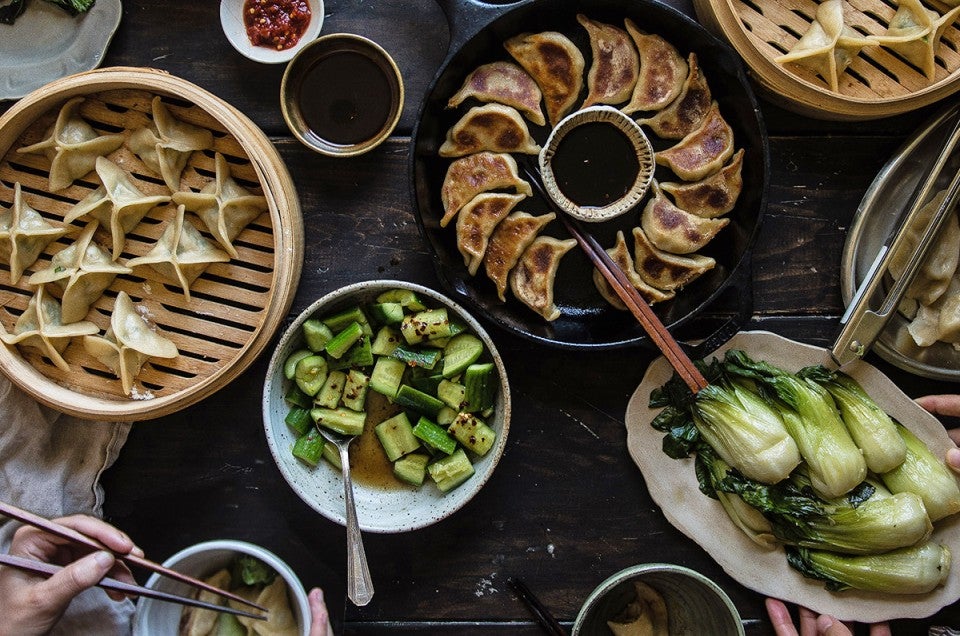



Sift magazine teamed up with Cynthia Chen McTernan to share her recipes and techniques for shaping Asian dumplings. Cynthia is the curator of the blog Two Red Bowls, where she presents comfort food influenced by her Chinese and her husband's Korean family backgrounds.
Shaping dumplings is a wonderful skill to have, and perfect for getting together with family and friends to practice folding and sharing the results. Once you've assembled a bunch of dumplings, you can do as Cynthia's family does: pull frosty bags of them from the freezer and toss them into a boiling pot of water until they bob to the surface. They make a wonderful impromptu meal or quick Saturday lunch.
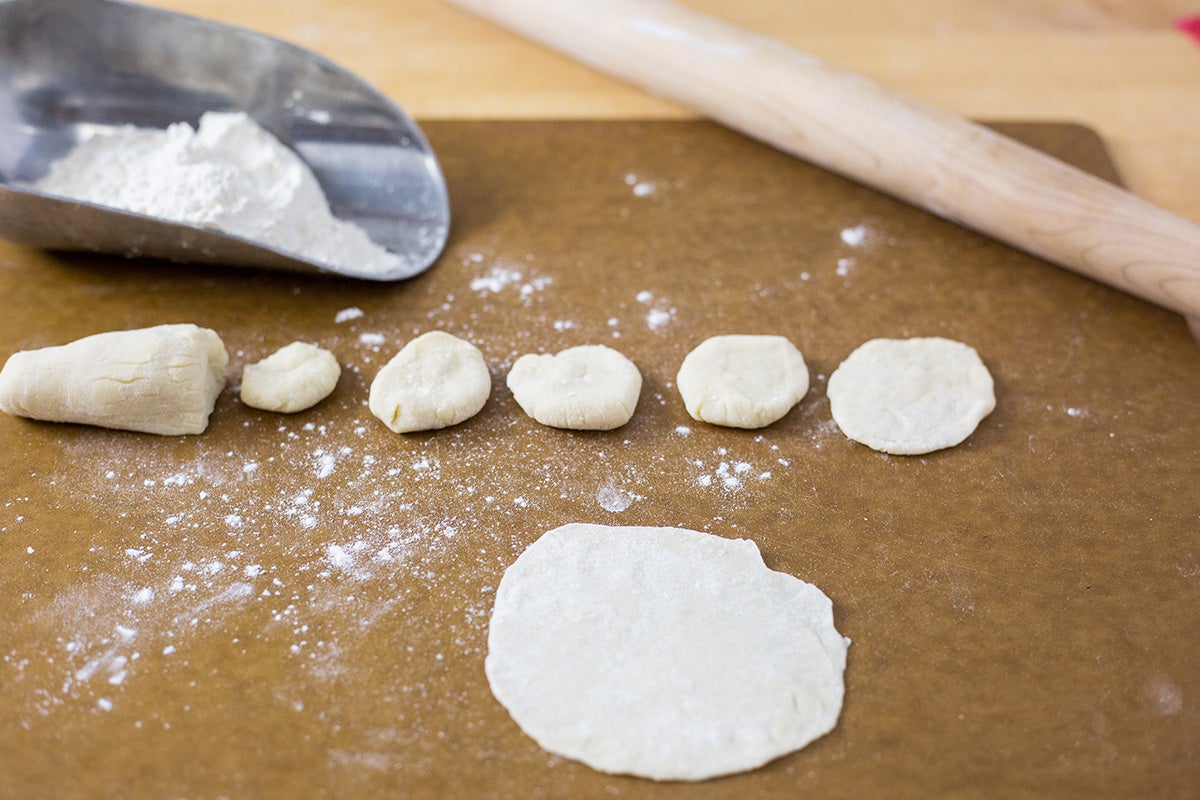
It isn't difficult; when you make the dough from scratch it's quite pliable (almost floppy), but soothing to work with.
To start things off, let's make the dough, which takes only three ingredients:
3 1/8 cups (13 1/4 ounces) King Arthur Unbleached All-Purpose Flour
3/4 teaspoon salt
1 cup + 2 tablespoons (9 ounces) boiling water
Follow the steps laid out in any of the three recipes that Cynthia shared in Sift: Pork And Cabbage Dumplings, Shrimp and Chive Dumplings, or Tofu and Mushroom Dumplings. (The dough is the same in all three.)
After the dough has rested, it's divided, portioned, and rolled into 3" circles. We like to use a French pastry pin for this; it allows us to make thinner edges on our circles, which results in more delicate pleats.
Next, decide which shape you want to tackle: half moon, rosebud, square, or pleated crescent.
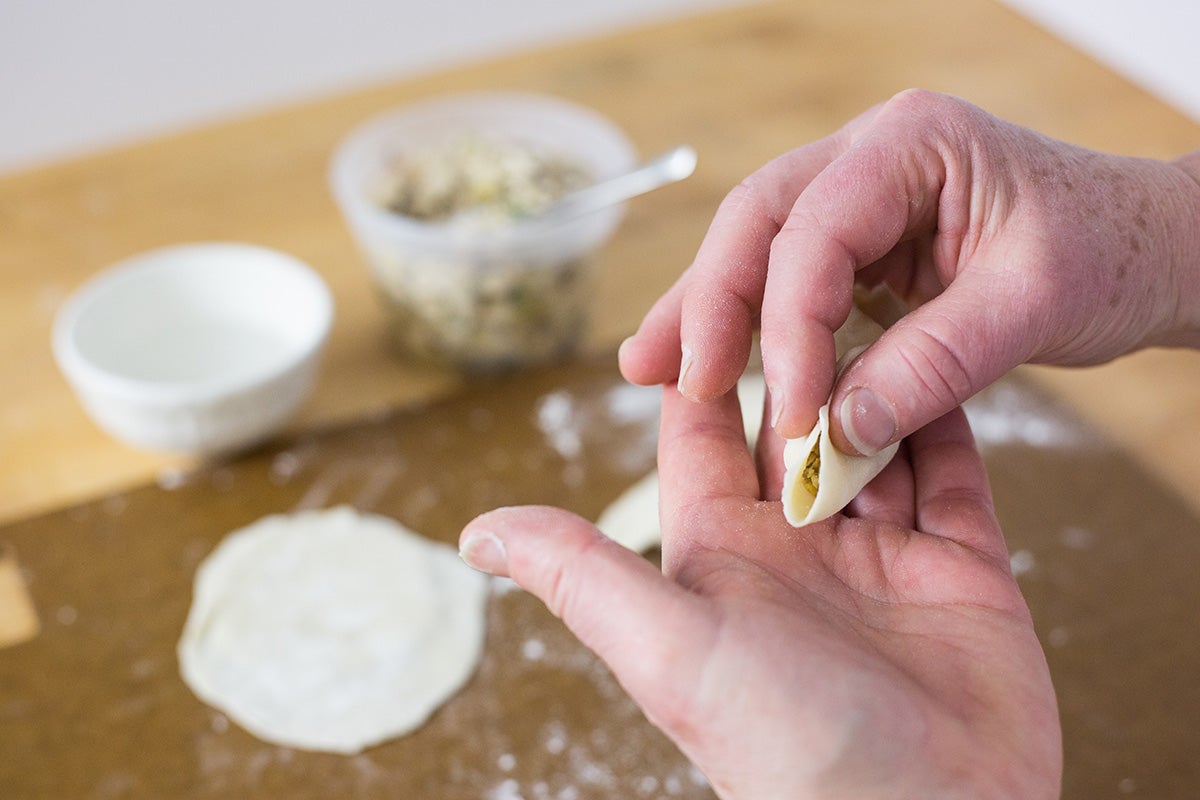
This is the shape we've chosen for our Tofu and Mushroom Dumplings, but, really, any of the three fillings work with any of our four shapes.
With the wrapper in your off hand, place 2 teaspoons of filling in the center. Bring the edges of the circle up to meet above the filling and pinch the dumpling closed. Simple as that.
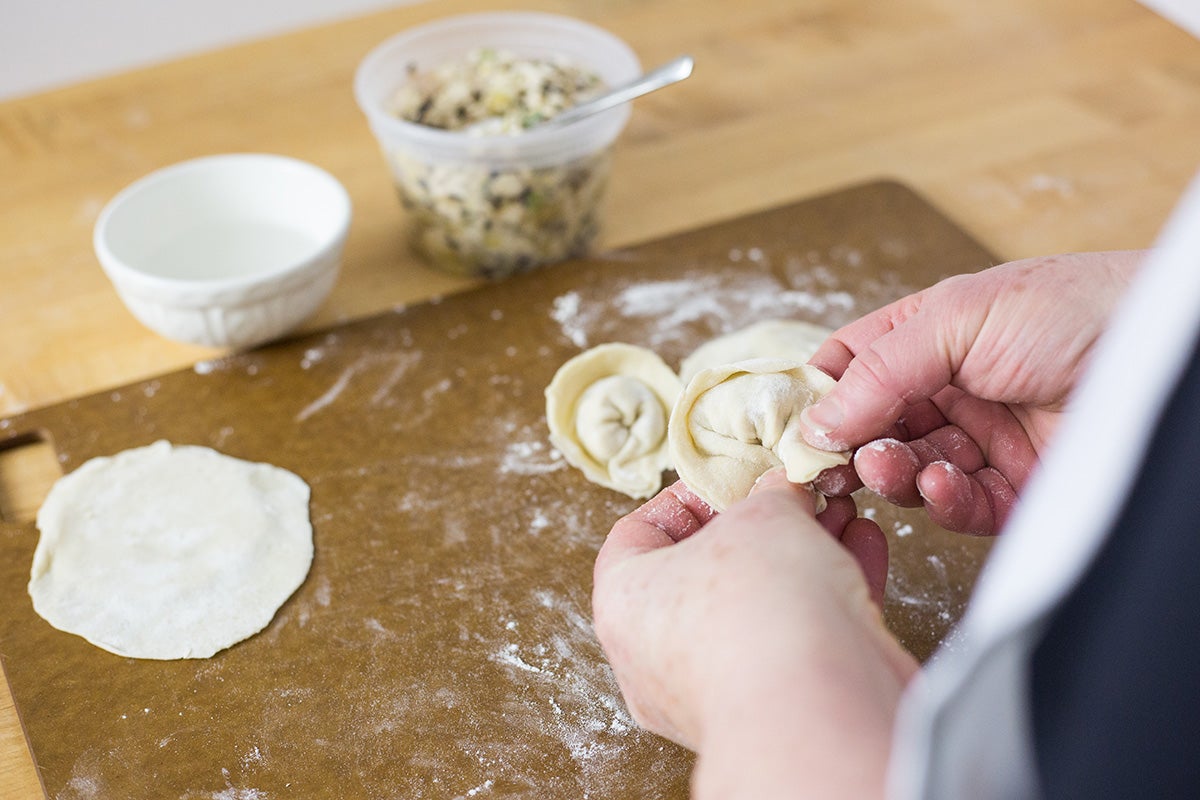
If you want to make them a little fancier, simply bring the ends of the half moon dumpling together, placing one over the other, and pinch to seal; now you have a rosebud shape.
You can cover the dumplings with a an inverted bowl or rimmed baking sheet so they don't dry out while you shape the rest, or put them on a parchment-lined baking sheet in the freezer, if you're making enough to freeze them for later.
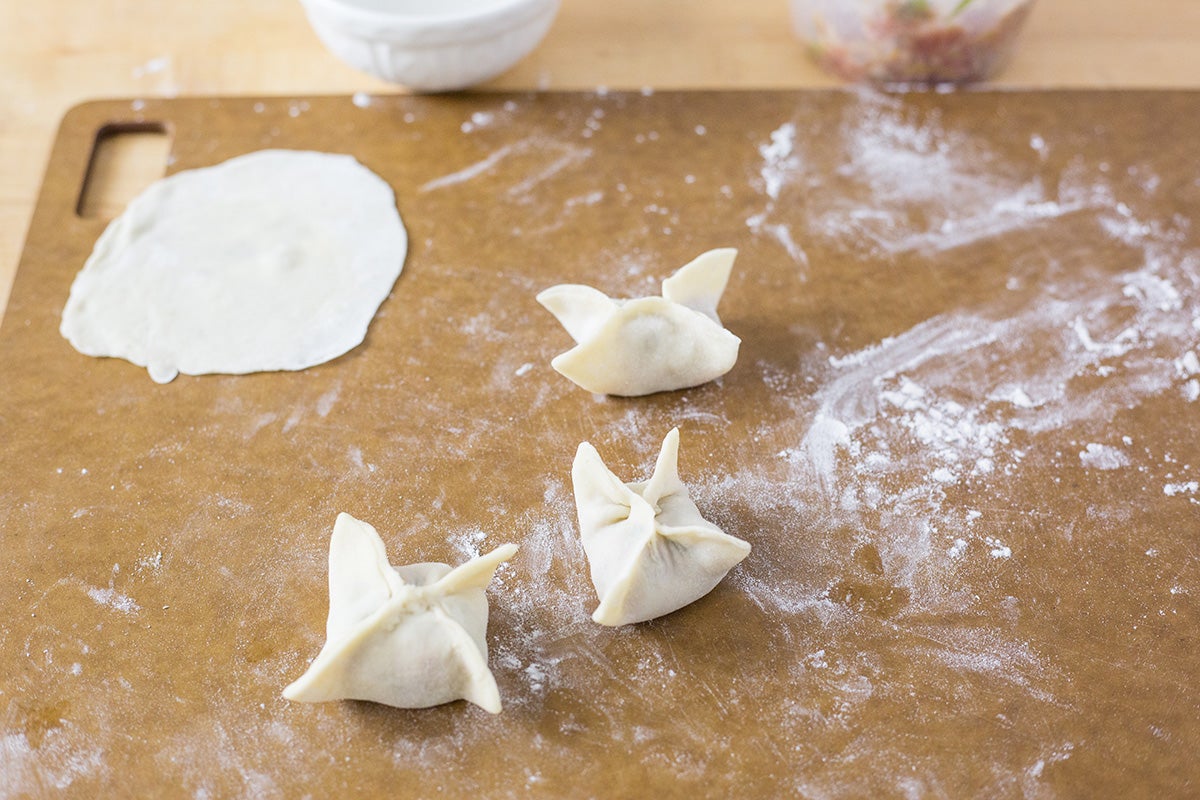
We chose this shape for our Pork and Cabbage Dumplings. The first two steps are the same as for half moons.
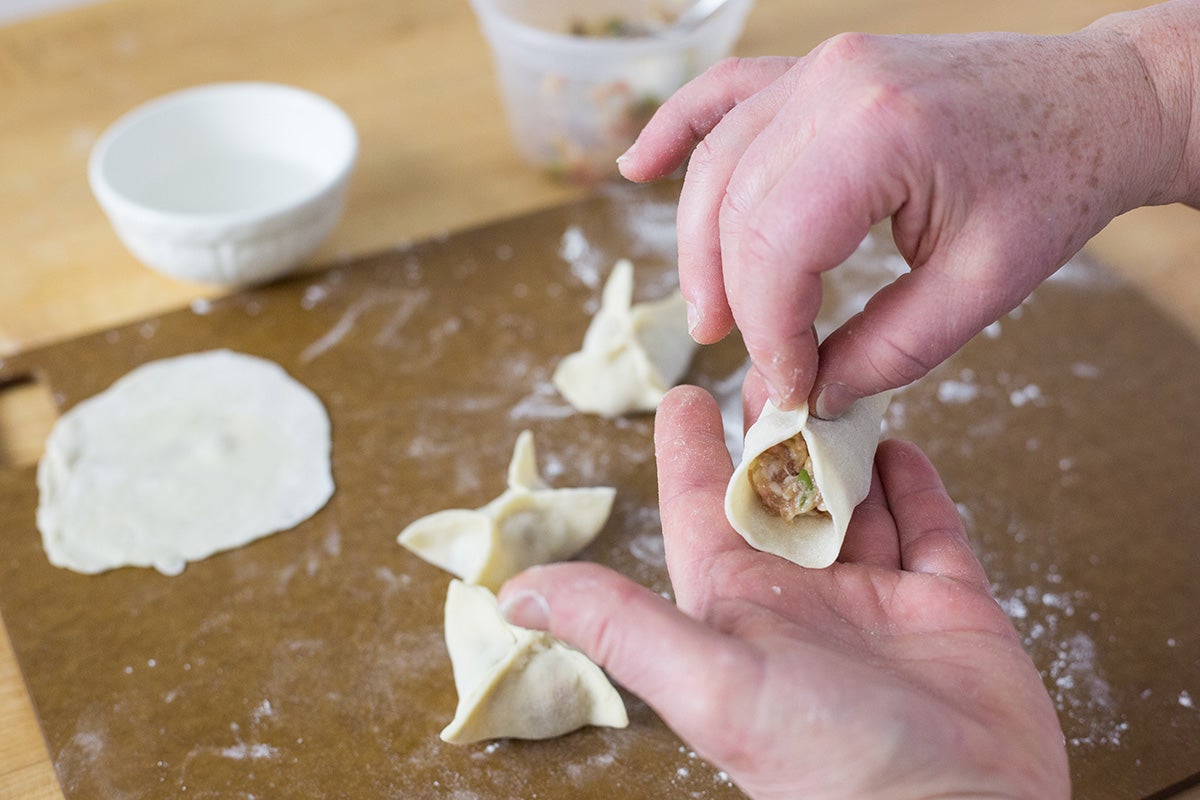
Put the wrapper in your off hand, place the filling in the center, then pinch the opposite edges together just in the center.

Now bring the open edges to the center, and pinch where the edges meet each other, creating four seams in a cross shape.
Set aside and cover with plastic or a damp towel while you shape the rest, or pop into the freezer as described above.
This is the shape we think of most often when it comes to shaping Asian dumplings. Some versions have pleats in two directions, each pointed toward the center. This version is pointed in one direction only, and we're making Shrimp and Chive Dumplings.
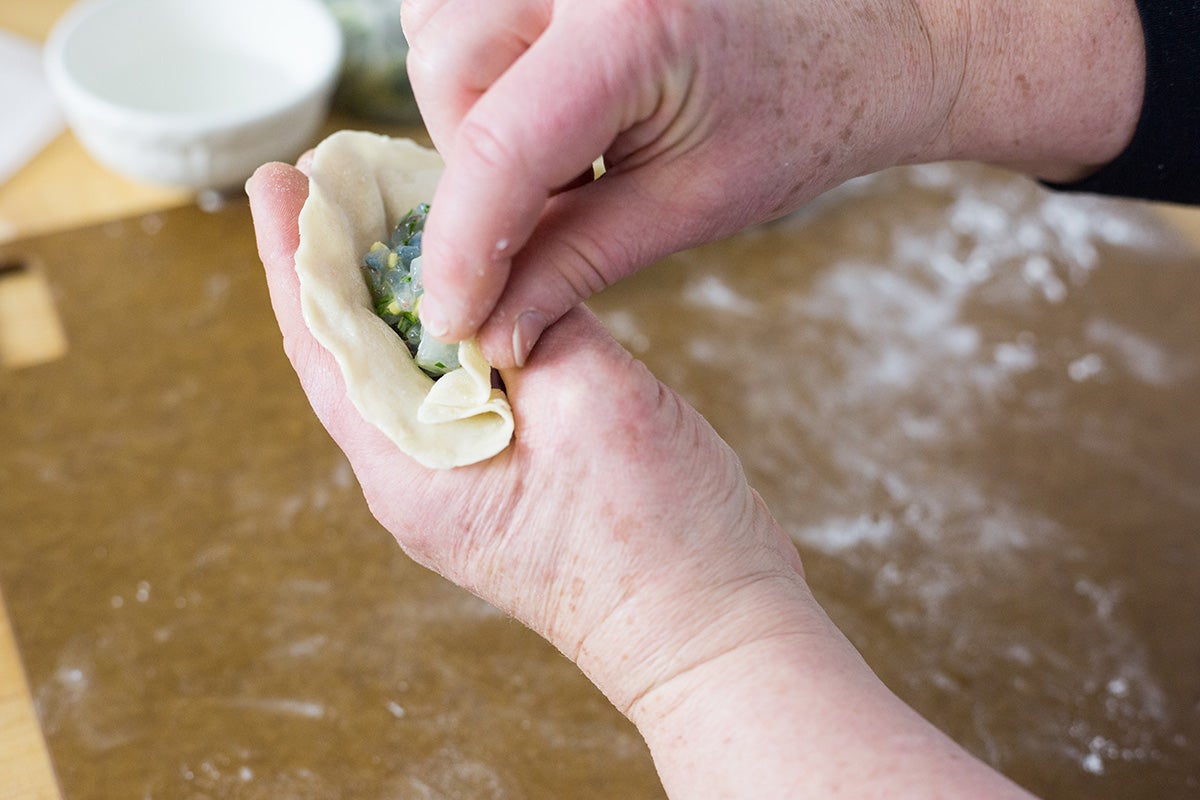 With the wrapper and filling in one hand, gather the dough from the opposite side and fold it into a pleat. It helps to moisten the edge of the dumpling to which you're gathering and pressing the dough.
With the wrapper and filling in one hand, gather the dough from the opposite side and fold it into a pleat. It helps to moisten the edge of the dumpling to which you're gathering and pressing the dough.

Keep gathering, folding, and pressing the folds to the opposite side of the dumpling. Once you're all the way across, the dumpling is done.
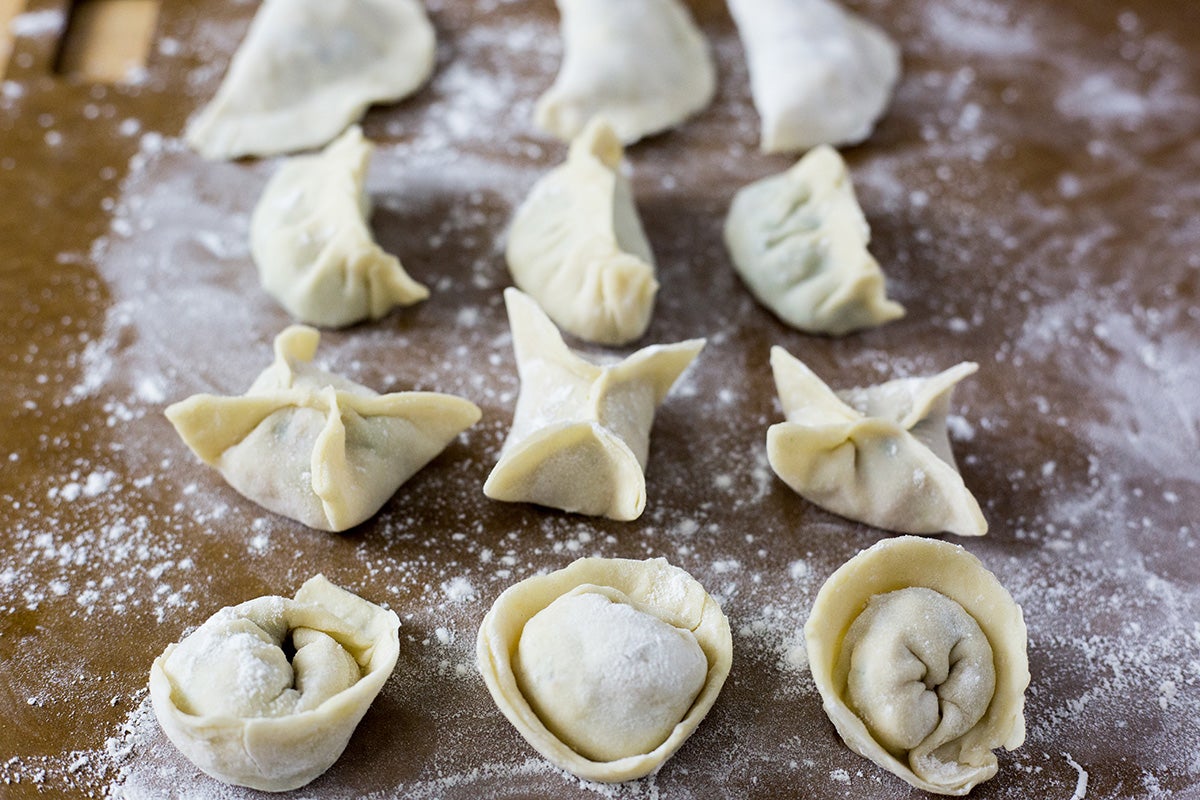
Here they all are. Rosebuds in front, squares behind that, pleated crescents, then half moons in the back row.
Once the dumplings are filled and folded, you can cook them in the way you prefer. Simplest is boiling, where the dumplings are dropped into boiling salted water until they float. Use a slotted spoon to retrieve them from the water, and serve with dipping sauce or in broth.
Steaming is accomplished in a bamboo or vegetable steamer. It's best to put the dumplings on small squares of parchment so they don't stick to the basket. Cook in a single layer (don't let the dumplings touch each other) over 2" of simmering water for 6 minutes, or until the wrappers are no longer doughy and the filling is cooked through.
To pan-fry dumplings, heat a tablespoon of oil until it shimmers in a wok or large skillet set over medium-high heat. Add as many dumplings as will fit in a ring (without touching each other) around the edge of the pan, flat side down. Cook until the bottoms are crisp and browned, about 2 minutes.
Add 3 to 4 tablespoons of water and cover. Let the dumplings steam for about 4 to 6 minutes, or until the fillings and wrappers are cooked through. Usually once the water cooks off and you hear sizzling from the pan, the dumplings are done.
Shaping Asian dumplings is the perfect get-together project. Everyone learns a new skill, the task goes quickly, and if you double your fillings, there's plenty for everyone to take home. We hope you'll give shaping Asian dumplings a try soon, and let us know how it goes in the comments below!

